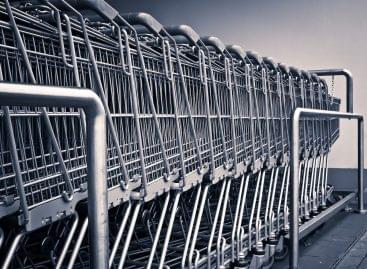Eastern-European overview
PwC CEE’S Retail & Consumer (R&C) Industry Sector was asked to compare the retail sectors of a few countries in the region. None of the 4 countries introduced plans to impose extra task on retail.
Ukraine
Tax changes entered into force as of 1 January 2011. The food industry has been affected by economic recession – sales declined by 20 percent in 2009 – but 2010 brought some kind of stabilisation and a real GDP growth of 4 percent is forecasted for 2011. Food industry is still fragmented, the biggest players have market shares around 4 percent and the only international chains present in the country are Billa and Metro Group.
Poland
Poland was the only country in the region with a real GDP growth in 2008 (5.03 percent) and 2009 (1.7 percent). According to data from 2008, annual retail sales were in the value of USD 49 billion – hypermarkets realised 51 percent, supermarkets had a 28-percent share and discount stores’ share was 15 percent. Metro, Eurocash, Biedronka, Carrefour, Tesco and Lidl are the biggest retail chains, with Metro (20 percent) and Tesco (12 percent) being the most important players.
Bulgaria
Bulgaria is legging behind other states in Central and Eastern Europe as regards retail chains. Data by Eurostat from 2008 revealed that the price level of products and services was 50-51 percent of the EU’s average. In the last five months of 2010 retail sales fell between 4.3 and 5.2 percent. LIDL acquired 23 stores formerly owned by PLUS and opened another 14 at the end of last year. They plan 25 new openings or acquisitions for 2011. The biggest problem for retailers is that real estate prices skyrocketed in and around bigger cities. Corporate tax is rather low at 10 percent and in the flat tax system the personal income tax is also only 10 percent.
Romania
VAT was raised from 19 to 24 percent and in the retail sector both retailers and suppliers are using ‘crisis survival’ strategies. Economic recession made consumers cut back on their spending and market players accommodated to the new situation with the following steps: purchase standards were modified, retail units’ floor space was reduced, bigger emphasis was placed on private label products and meat, wine and bakery product manufacturers opened their own stores (they have more than 100) to sell their products
Related news
Related news
NGM: The minimum wage will increase by 11 percent in 2026, and the guaranteed minimum wage by 7 percent
🎧 Hallgasd a cikket: Lejátszás Szünet Folytatás Leállítás Nyelv: Auto…
Read more >The first Hungarian IT teacher would be 110 years old on January 2: Mihály Kovács taught computer science before PCs
🎧 Hallgasd a cikket: Lejátszás Szünet Folytatás Leállítás Nyelv: Auto…
Read more >New Year’s Eve: shortened opening hours in stores – general store closure on January 1
🎧 Hallgasd a cikket: Lejátszás Szünet Folytatás Leállítás Nyelv: Auto…
Read more >



